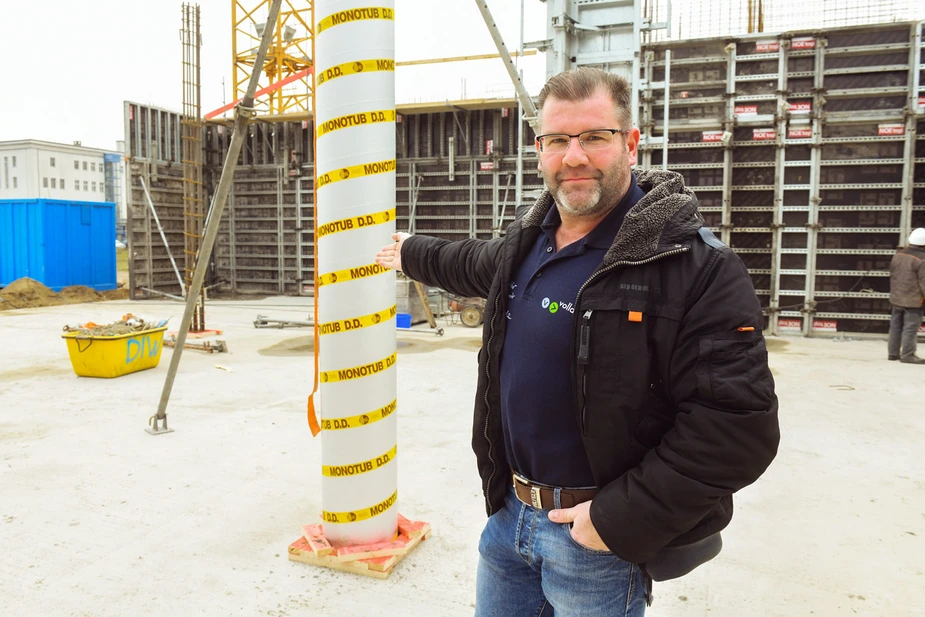The builder
Matthias Blankenburg found the wreckage of a bomber in Adlershof
Suddenly, the excavator came to a halt in the pale gravel and exposed pitch black, dirty sand. The air was filled with a musty scent: ‘It certainly wasn’t a natural smell,’ says Matthias Blankenburg. For two weeks, the machine scooped shovelfuls from the soil and experts from the bomb disposal unit meticulously examined their content. Then, white-green aluminium ash became visible, molten glass, and a vast amount of shells. Traces of a drama, which unfolded in the sky above Adlershof more than seven decades ago.
Today, one can see bare concrete walls that will later become the ground floor of the new building on Willi-Schwabe-Strasse 1. By early 2020, the ‘Air Loft’ construction project will serve as an office building for the software company Emarsys and its 150 employees. Four-and-a-half stories, 4,200 sqm of office space. Matthias Blankenburg is the project head at the Vollack Group, the company responsible for construction. One out of its ten national branches is based on Rudower Chaussee in Adlershof.
The now 45-year-old once completed a bricklayer’s apprenticeship and has a civil engineering degree. He supervised the construction of the Dutch embassy, designed by star architect Rem Koohlhaas, and was involved in establishing the semi-conductor industry in Saxony as a freelance expert. He started working for Vollack in Adlershof six months ago. Discovering the wreckage of a WWII bomber on one of his construction sites, like in Willi-Schwabe-Strasse in late September, never happened to him before.
In fact, nothing had really suggested it. Aerial images from the war period, which are routinely consulted during construction planning, had shown a moat on the street-side and what looked like crater on the rear of the premises. The latter turned out to be the crash site of the bomber. For two weeks, the groundwork went as planned. The site had already been bulldozed to about 90 percent, says Blankenburg. ‘We hit the jackpot during the last 10%.’
The largest parts of the wreckage, the wings and fuselage, had been salvaged just after the shoot-down. The diggers only found the rusty rest. Two Browning machine guns, calibre 30 and 50. An oxygen bottle, which, for a brief, scary moment, was thought to be a bomb. The crumpled casing of the rear wheel with English inscriptions. Valves, coolers, scraps of a parachute. The labelling on the chute said that it was manufactured by the Atlantic Parachute Company in the state of Massachussetts in 1943. Meanwhile, everything has been salvaged and the construction site has been secured, says Blankenburg.
The Second World War is a subject that he feels very strongly about. On behalf of the German War Graves Commission, he visited the battlefield at Halbe several times as an excavator. It is important to him that the last forgotten victims of the war find their peace.
By Winfried Dolderer for Adlershof Journal
